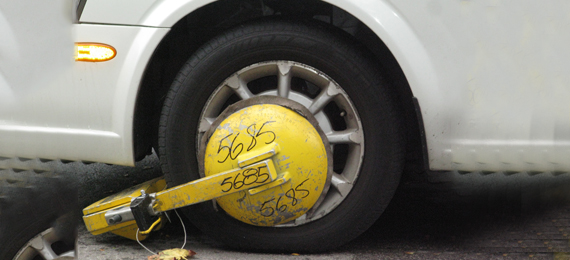
What Is a Wheel Clamp?
A wheel clamp is a device that is specially designed to prevent vehicles from moving. It is also known as wheel boot or car parking boot. It is also popularly known as Denver boot as it was invented in Denver. But have you ever wondered who invented the wheel clamp? This article tells you everything about the wheel clamp and its history.
History of Denver Boot
The history of automobiles began in the 1880s. Especially during the 1950 and 1960s the sales of cars were at the peak. But, along with that car thefts also became a major problem. Another new concept called Joy Riding was also introduced in which people stole other’s cars for no specific reason but just for the thrill. Later, many devices were invented in order to prevent car thefts. Several manufacturers came up with various ideas to prevent motor vehicle theft, they invented devices in different sizes and prices. In the period between 1914 and 1925 around 25 patents for car, locks were registered.
Who Invented the Wheel Clamp?
In the later stages, the wheel clamp was invented by a pattern maker, Frank Marugg. But when was the wheel clamp invented? The wheel clamp was invented in 1944 but was only patented in 1958. Frank Marugg was also a violinist with the Denver Symphony Orchestra, A professional Amerian orchestra in Denver. He was also friends with many politicians and policemen.
1. Who Invented the Wheel Camp?
- A. George Brayton
- B. Karl Benz
- C. Frank Marugg
- D. None of the Above
How Was the Wheel Boot Invented?
It was the time when the parking enforcement problems were on the rise and police started to tow the ticketed cars but later many cases of the towed car vandalizations cases were reported. When Frank Marugg invented the wheel clamp(originally called auto mobilizer) they thought it could prevent car thefts.
When they reached Marugg for help he cast a steel wheel clamp originally and when the police used it on January 5, 1955, they collected more than $18,000 in the first month. Later, he used an aluminum-based alloy instead of steel to cast the wheel boot. He then started casting it for larger vehicles as well as for hotels and parking lot owners. His invention was a huge success and by 1970 he sold over 2,000 wheel boots. Until 1986, Marugg’s daughter kept up the business. Later, Clancy System International bought the right to the boots. Currently, ‘the London wheel clamp’ is the best known for wheel clamps.
Benefits of Wheel Clamps
Some of the major advantages of wheel clamps are,
- To prevent car thefts or to prevent driving a disabled vehicle.
- Wheel clamps provide instant physical immobilization to the vehicles, even a person who has access to the car keys cannot move the car.
- Sometimes, you may experience unauthorized towing, wheel clamps help prevent it.
- Wheel clamps come in different sizes hence, no matter what the size of your vehicle is you can still protect it.
- Unauthorized parking of cars can be prevented. If a car is parked illegally the owner of the land or the police can charge a high amount in order to release the clamp.
Wheel Clamping
Wheel clamping is nothing but making any motor vehicle immobilize. Only the law authorities or the person with power such as the owner of the land can perform wheel-clamping. If a car is immobilized by the law authorities or by the owner of the land for illegal parking, the owner of the car must pay fine in order to remove the car parking boot. The wheel boot has a clamp that surrounds the vehicle’s wheel and prevents it from moving. But if you can see a valid blue badge the car cannot be taken. The vehicles cannot be clamped on private properties such as supermarket car parking, another person’s driveway, etc. It can only be clamped on a highway or in the debtors’ place. And if your vehicle is clamped do not obstruct the bailiffs or remove the clamp as it is a criminal offense and the person might be fined or sent to jail.